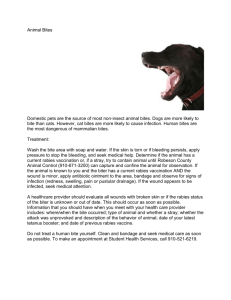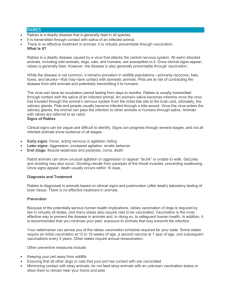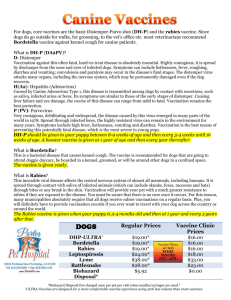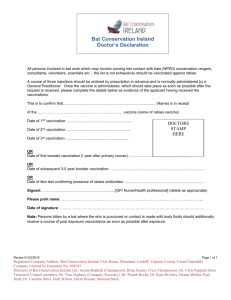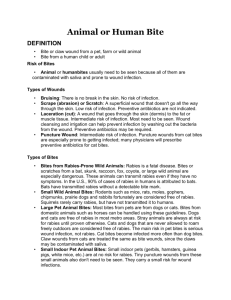Q&A
advertisement
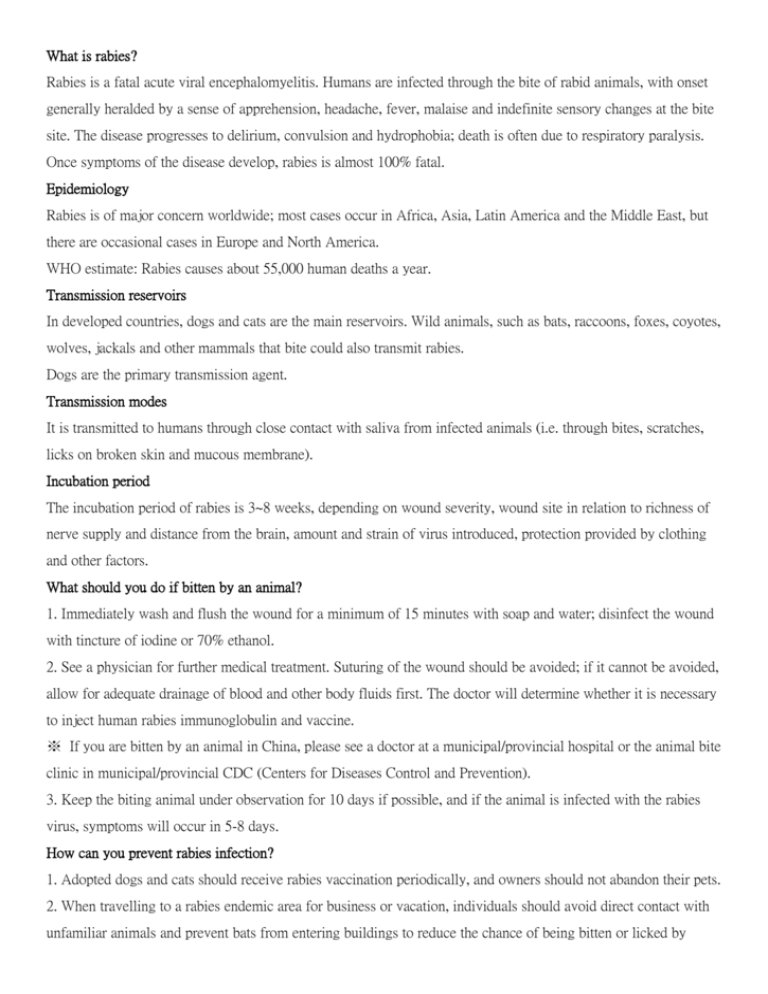
What is rabies? Rabies is a fatal acute viral encephalomyelitis. Humans are infected through the bite of rabid animals, with onset generally heralded by a sense of apprehension, headache, fever, malaise and indefinite sensory changes at the bite site. The disease progresses to delirium, convulsion and hydrophobia; death is often due to respiratory paralysis. Once symptoms of the disease develop, rabies is almost 100% fatal. Epidemiology Rabies is of major concern worldwide; most cases occur in Africa, Asia, Latin America and the Middle East, but there are occasional cases in Europe and North America. WHO estimate: Rabies causes about 55,000 human deaths a year. Transmission reservoirs In developed countries, dogs and cats are the main reservoirs. Wild animals, such as bats, raccoons, foxes, coyotes, wolves, jackals and other mammals that bite could also transmit rabies. Dogs are the primary transmission agent. Transmission modes It is transmitted to humans through close contact with saliva from infected animals (i.e. through bites, scratches, licks on broken skin and mucous membrane). Incubation period The incubation period of rabies is 3~8 weeks, depending on wound severity, wound site in relation to richness of nerve supply and distance from the brain, amount and strain of virus introduced, protection provided by clothing and other factors. What should you do if bitten by an animal? 1. Immediately wash and flush the wound for a minimum of 15 minutes with soap and water; disinfect the wound with tincture of iodine or 70% ethanol. 2. See a physician for further medical treatment. Suturing of the wound should be avoided; if it cannot be avoided, allow for adequate drainage of blood and other body fluids first. The doctor will determine whether it is necessary to inject human rabies immunoglobulin and vaccine. ※ If you are bitten by an animal in China, please see a doctor at a municipal/provincial hospital or the animal bite clinic in municipal/provincial CDC (Centers for Diseases Control and Prevention). 3. Keep the biting animal under observation for 10 days if possible, and if the animal is infected with the rabies virus, symptoms will occur in 5-8 days. How can you prevent rabies infection? 1. Adopted dogs and cats should receive rabies vaccination periodically, and owners should not abandon their pets. 2. When travelling to a rabies endemic area for business or vacation, individuals should avoid direct contact with unfamiliar animals and prevent bats from entering buildings to reduce the chance of being bitten or licked by mammals. 3. Imported animal must be quarantined and inspected according to law, and people must not engage in animal smuggling to prevent the spread of rabies. Clinical symptoms in animals 1. Clinical symptoms of dogs (1). Incubation period is 3~8 weeks; death occurs within 5~7 days of symptom onset. (2). The disease progression can be divided into three phases: a、 Prodromal phase: subtle changes in behavior, nervousness, anxiety, fever and licking of the bite site. b、 Furious phase: constant growling and braking, excitable, irritable and aggressive. c、 Paralytic phase: appearance of choking, paralysis of jaw, throat and chewing muscles that leads to drooling and foaming of saliva, inability to swallow, and eventually coma and death. 2. Clinical symptoms of cats The clinical symptoms of cats are like the dogs. Cats usually develop more fever spikes and erratic behavior than dogs. They paralyze and die quickly within 2~4days of symptom onset. Post-exposure treatment 1. Principle of treatment Currently, treatment is offered to people who were bitten by suspected rabid animals in endemic areas but have not completed the five-dose post-exposure vaccine aeries. 2. Rabies immunoglobulin Immunoglobulin should be administered into and around the wound site. Any remainder should be injected intramuscularly at a site distant from the site of vaccine administration. 3. Rabies vaccine and immunization For individuals who have never been vaccinated before, five doses of post-exposure vaccines are needed. The first dose should be given as soon as possible after the bite, and additional doses should be given on 3, 7, 14, and 28 after the first injection. 4. Adverse effects of vaccination (1). Local reactions: pain erythema, swelling or itching at the injection site. (2). Systemic reactions: headache, nausea, muscle aches, abdominal pain and dizziness. (3). Vaccination can on rare occasions cause Guillain-Barre’s syndrome. Where to get vaccination? Vaccination can be provided in one of the hospitals listed in the table attached. Please bring passport, vaccination record, and doctor’s certificate where you were treated. A doctor will review the condition, and complete rabies vaccination series as needed.
